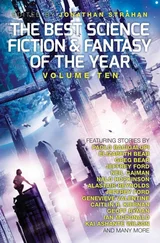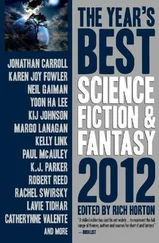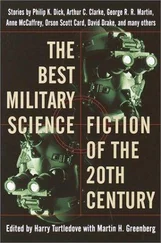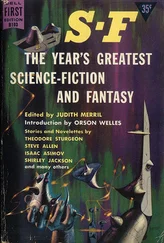This was the first time in Martin’s life he had met a stranger who had heard of him.
“So you should be interested in the control software. We emulate a DEC PDP-11/34 programmed in FORTRAN on current hardware,” the technician said.
Martin nodded. I would indeed like to take a look at that software—definitely a true museum piece, which is rare these days. However, this was also typical of the pragmatic approach used by NASA. When the facility was built, they obviously still needed a PDP-11 mainframe to control it. Later, the mainframe was emulated on a normal PC rather than reprogramming everything from scratch. Nowadays, the control software would probably run on any intelligent power outlet.
“Why didn’t you simply recompile the FORTRAN programs?” Martin asked.
“It is all tied very closely to the hardware,” the technician explained. “Does the term Unibus still mean anything to you? Control and interface are located on two Unibus cards for which we got a Strobe Osprey. For the system, our PC now looks like a good old PDP-11. Constructing a new system would have cost millions, and the old one still fulfills its purpose. You are going to see that. Afterward, why don’t you come to my little room back there?” The technician pointed to the right.
“But," he went on, "let’s concentrate on work first. Has someone already told you what MSDD is often called by its, ahem, victims?”
“Why don’t you tell me that afterward?” said Martin.
Willinger laughed.
“We already reserved Cabin 1 for you. Please enter.”
The technician opened the door of the capsule numbered 1. Martin bent down to enter. It was dark inside. A comfortable seat was located in the center. In front of it there were several monitors, an input console, and several control levers.
“Take this.”
The technician pressed a paper bag into his hand. Then he closed the door of the cabin behind him. A pair of headphones hung from the seat back. Martin put them on and buckled in.
The voice of the technician continued, “The purpose of this apparatus is to show you how easily your senses can be deceived. Spatial disorientation is responsible for the majority of accidents in military aviation. It is heightened by the lack of reference points, darkness, and acceleration. All of these are factors you will encounter as an astronaut. But don’t worry, you are completely safe here. If you feel sick, use the paper bag. This is also absolutely normal. We would actually worry if you did not react that way. However, if you miss the bag, you will have to clean up the mess yourself.”
Martin looked at the bag in the bluish light of the monitors and opened it carefully . Now I know why I have always avoided such rides at carnivals. He breathed in the air that seemed to have become thicker since the closing of the door. Is there a sour smell left behind by my predecessors? He wrinkled his nose.
The technician said, “We are about to start.”
A roller blind opened in front of Martin—he had not noticed it before. Behind it was a pane of frosted glass that seemed to be lit by a projector. It showed a starry sky, maybe to calm him down. Martin felt the acceleration as the platform was turning. The starry sky remained in place. Nice trick . His eyes told him he was standing still, while the balance system in his ears signaled acceleration. A new force pulled at his back, and the capsule was now spinning around its own axis, first slowly, then faster. The starry sky raced past when the cabin was facing the middle. It began to change, and now the stars no longer stood still but seemed to move backwards. His optical sense was convinced this carousel was turning the other way, yet he felt the acceleration and heard a slight rumbling.
“In front of you there is a joystick. Aim it toward the direction in which the capsule is moving,” ordered the technician.
Martin grabbed the joystick. When he moved it, a reticle moved across the coordinate system on the screen. Martin could not make up his mind. Was it X axis, plus or minus? Or Y axis? From what he had seen of the device, it could not possibly move along the Z axis because the capsule only had a single pivot joint. However, the image in the window told him he was floating upward at an angle.
Martin selected this direction with the joystick and pressed the trigger.
“Totally wrong.”
A blue circle flashed at the correct position.
“Again.”
Martin had to learn to distrust his optical sense. The stars never moved from their positions, no matter how fast a spacecraft moved through space. They were much too far away. He needed to question any reference points. In space, there were neither contrails nor engine sounds. He could only rely on two inputs, the signals of his inner ear indicating his body was being accelerated in a certain direction, and the seeming change in size of an object that came nearer or moved farther away. As long as he moved with constant speed through the emptiness of space, he would not be able to determine his movement data without sophisticated machinery. He noticed he still held the paper bag in his left hand. It was needless, as he did not feel sick.
The MSDD changed the rotation of the platform and of the capsule according to a predetermined program. It made the starry sky change its position, sometimes faster, sometimes slower. Martin became more and more aware of which inputs were only meant to confuse him and which ones were genuine. Despite this, he did not always hit the target with his joystick. Human senses were not made for orientation in a three-dimensional space. For millions of years, humans and their predecessors had been moving across a seemingly flat plain. Sea creatures probably would make better astronauts than humans.
“Alright, that’s enough,” the voice of the technician said in Martin’s headphones. The sound of the rotation faded away. Soon afterward, the technician opened the door. Martin was blinded by the bright light. Willinger offered him a hand. Martin rejected it, but after his first step out of the capsule, he stumbled. For a while he seemed to be standing on an incline. Willinger caught him.
“That’s a typical aftereffect,” he said, laughing raucously.

October 23, 2045, Pensacola
“Tomorrow you are climbing Mt. Everest. However, you can leave your hiking boots and your backpack at home,” Willinger had announced yesterday. Once again they were to meet at the building of the Medical Institute.
Extreme height meant low air pressure. So, Martin was not surprised when Willinger led him to a room with a large tank. It was a pressure chamber. A doctor was in charge here, and he addressed both men. “Low pressure and low oxygen saturation have different effects on different people. The purpose is to have you notice these signs yourself. Maybe sometime your spacecraft will lose pressure and the sensors will fail. Then you must start a countermeasure before it is too late. You certainly won’t have much time. If your brain does not receive oxygen for three minutes, you will be dead.”
The man in the white lab coat, who had not introduced himself by name, led them into the basement. Willinger seemed to know him because he sometimes whispered to him. The sign at the door the doctor finally opened with his chip card read, HAI Lab . The room was classroom-sized and was mostly filled with a sort of gas tank, a horizontal cylinder with an entrance at one end.
“This is our HAI, or High-Altitude Indoctrination Device. Others might call it a pressure chamber. You know how the military loves acronyms,” said the doctor.
I almost forgot. We are still at a Navy installation, Martin thought.
Читать дальше













